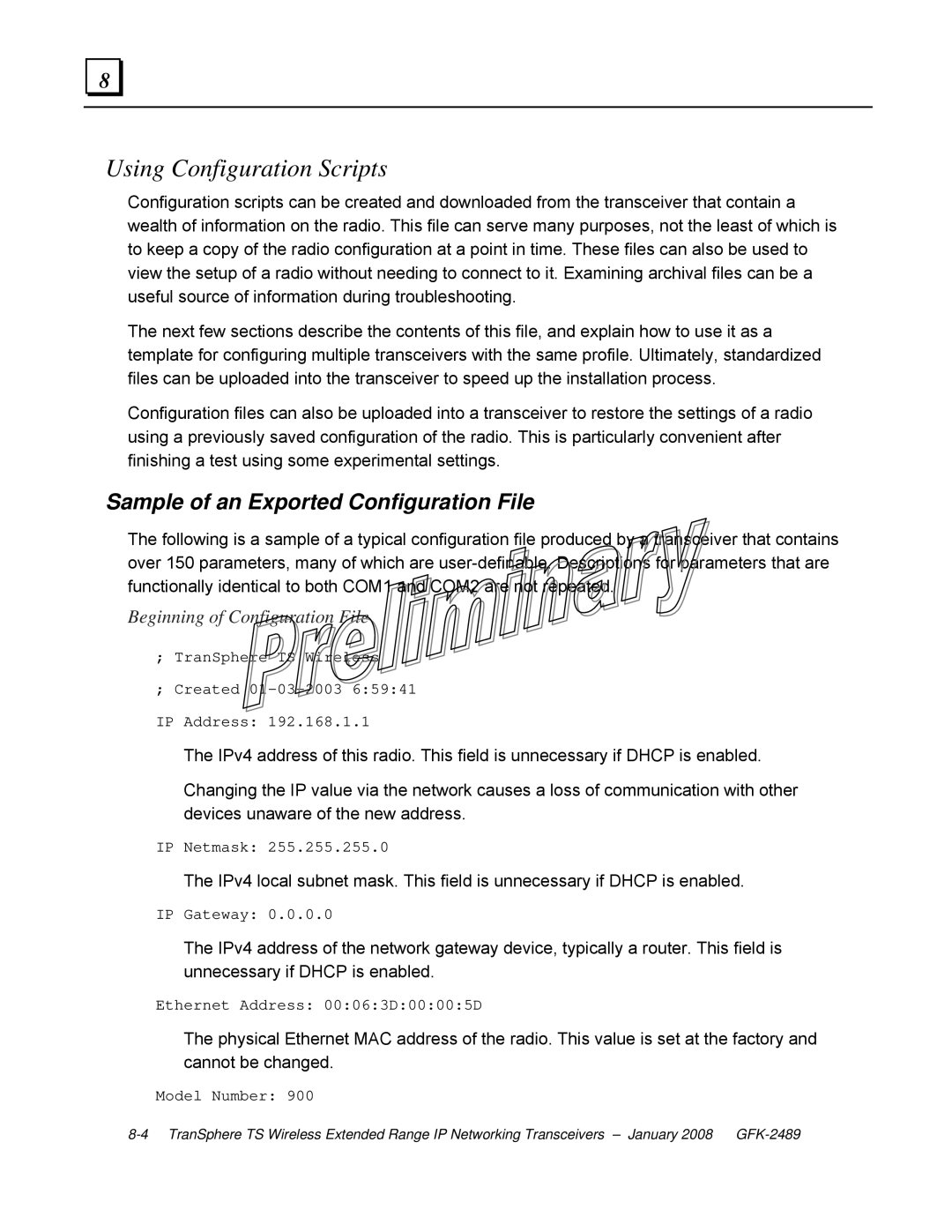
8 |
Using Configuration Scripts
Configuration scripts can be created and downloaded from the transceiver that contain a wealth of information on the radio. This file can serve many purposes, not the least of which is to keep a copy of the radio configuration at a point in time. These files can also be used to view the setup of a radio without needing to connect to it. Examining archival files can be a useful source of information during troubleshooting.
The next few sections describe the contents of this file, and explain how to use it as a template for configuring multiple transceivers with the same profile. Ultimately, standardized files can be uploaded into the transceiver to speed up the installation process.
Configuration files can also be uploaded into a transceiver to restore the settings of a radio using a previously saved configuration of the radio. This is particularly convenient after finishing a test using some experimental settings.
Sample of an Exported Configuration File
The following is a sample of a typical configuration file produced by a transceiver that contains over 150 parameters, many of which are
Beginning of Configuration File
;TranSphere TS Wireless
;Created
The IPv4 address of this radio. This field is unnecessary if DHCP is enabled.
Changing the IP value via the network causes a loss of communication with other devices unaware of the new address.
IP Netmask: 255.255.255.0
The IPv4 local subnet mask. This field is unnecessary if DHCP is enabled.
IP Gateway: 0.0.0.0
The IPv4 address of the network gateway device, typically a router. This field is unnecessary if DHCP is enabled.
Ethernet Address: 00:06:3D:00:00:5D
The physical Ethernet MAC address of the radio. This value is set at the factory and cannot be changed.
Model Number: 900
